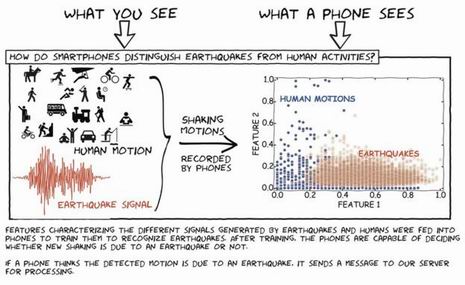
|
|

|
|
| April 19, 2024 |
|
MyShake quake app invites public testing 
BERKELEY - A new app that turns a smartphone into a mobile seismometer is being rolled out by California scientists.
Known as MyShake, it can sense an earthquake even when the cell device is being carried in a pocket or a bag. The researchers want users to download the app, in the first instance, to help test and improve its capabilities. But ultimately the idea is that recruited phones will be part of a network that not only gathers data but also issues alerts. Destructive ground motions take time to move out from the epicentre of a large tremor, meaning people at more distant locations could receive several seconds' vital warning on their phones. "Just a few seconds' warning is all you need to 'drop, take cover and hold on'," said Prof Richard Allen from the UC Berkeley Seismological Laboratory. "Based on what social scientists have told us about past earthquakes, if everyone got under a sturdy table, the estimate is that we could reduce the number of injuries in a quake by 50%," he told BBC News. Prof Allen has a paper about MyShake in this week's Science Advances journal, but he has also been demonstrating it here in Washington DC at the annual meeting of the American Association for the Advancement of Science. The app relies on a sophisticated algorithm to analyse all the different vibrations picked up by a phone's onboard accelerometer. This algorithm has been "trained" to distinguish between everyday human motions and those specific to an earthquake. The achieved sensitivity is for a Magnitude 5 event at a distance of 10km (6.2 miles) from the epicentre. In simulations, the app detects a quake correctly in 93% of cases . All this is done in the background - much like health apps that monitor the fitness activity of the phone user. Once triggered, MyShake sends a message to a central server over the mobile network. The hub then calculates the location and size of the quake. Prof Allen is a leading figure behind ShakeAlert, the earthquake early warning system now in development for California. Only a few such systems exist in the world. They work on the principle of being able to detect the faster-moving but not-so-damaging P-waves in a seismic event ahead of its S-waves, which cause most destruction. (Source: BBC) Story Date: February 15, 2016
|